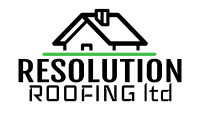Understanding The Different Types Of Roofing And Its Maintenance
The roof of your home is not only a protective shield against the elements but also a defining aesthetic element of your property.
If you are building a new residential or commercial building, looking at re-roofing, or just need to gain a greater understanding of the type of roof maintenance you may be in for if you purchase a particular property, it may help to get a broad overview of some of the options available.
Understanding the various types of roofing materials available and their unique maintenance requirements is crucial if you want to get the best from your roof in terms of longevity and integrity.
At Resolution Roofing we specialise in long-run steel roofing – and we recommend it to all our clients looking to replace a worn or damaged roof.
Here, we’ll explore a few different roofing types commonly used in New Zealand and discuss the specific maintenance considerations for each.
Concrete Tiles
Concrete tiles are a popular roofing option used in this country for decades; in fact, many State Houses were built with concrete tile rooves as they are considered highly durable. Often these tiles are designed to mimic the appearance of traditional clay tiles while providing increased longevity and resistance to weather conditions.
While the materials used in concrete tiles are steadily becoming lighter, this is still a heavy option for your roof and will likely need to be laid utilising extra structural framing.
Cracked or broken concrete tiles can compromise your roof’s waterproofing and decrease aesthetic appeal, and these tiles tend to fade over time and look quite shabby. Regular inspections are essential to promptly identify and replace damaged tiles, as concrete is a porous material, so you need to be extra vigilant about moisture ingress and mould formation.
If you choose concrete tiles, you must book regular inspections and cleaning to remove debris and prevent moss or algae growth.
Clay Tiles
Clay tiles have been used as a roofing material for literal millennia, they can be traced back around 12 thousand years in China, and they are still hugely popular due to their colouring, fire retardant properties and resistance to damage caused by insects nesting in your roof.
Like concrete tiles, clay tiles are heavy, somewhat porous and may be more prone to breaking if a tree branch or hardcore weather hits your roof. Clay tiles are also subject to spalling – this is a phenomenon that occurs when the weather is frigid, and moisture that has seeped into your clay tiles freezes, causing the tiles to break up.
Vigilance is the watchword when it comes to clay tiles and roof maintenance; book an initial assessment for your clay tile roof that includes documentation to trace changes in your roofing, then be sure to follow up – especially after the winter months. Also, don’t get up on your clay tile roof yourself, as they need a professional touch – they are prone to cracking when walked on.
Regular roof maintenance, including cleaning and treating the tiles with anti-moss solutions, can help preserve the charm and performance of your clay tile roof.
Timber Shingles
Wood shingles look gorgeous and are a sustainable, eco-friendly choice; they also provide excellent insulation and are known for their lightweight makeup. Like any wood, timber shingles are more likely to be flammable – although they can be treated to decrease the risk somewhat.
Vulnerable to the elements, part of the roof maintenance for a timber tile roof will entail keeping overhanging foliage trimmed back as these types of rooves are more likely to rot if vegetation starts to accumulate as the moisture created can easily seep in.
You will get a charming aesthetic with a timber tile roof; however, you must stay on top of your inspections and roof maintenance as they are more vulnerable than other more durable materials.
Long-Run Steel
Of all the choices out there, popular long-run steel products like Coloursteel and Colorcote continue to win when it comes to easy roof maintenance options. With a seamless design, this roofing can handle extreme weather conditions, and the multiple coatings applied to the runs in combination with the steel construction contribute to its hardy nature.
Easy to install and relatively lightweight, you can choose from a wide variety of colours for a contemporary finish to your commercial or residential property.
In terms of roof maintenance, long-run steel requires inspection at least twice a year – plus, you need to be certain you use a qualified installer as an improper install could see your roofing lift in high winds. This type of roofing is less prone to leaks; however, your professional roof maintenance team should check for pooling, corrosion and moss growth.
Contact Us Now
Whatever type of roofing you have or are thinking of installing regular roof maintenance is essential. A good maintenance team will save you money by flagging potential issues when they are small, stopping them from escalating into expensive problems.
At Resolution Roofing we are happy to assess your tile or shingle roof ahead of conversion to long-run steel, however, we don’t do repairs on tile or shingle roofs.
Regular inspections, prompt repairs, and proactive maintenance measures are all vital to ensuring your roof’s longevity, functionality, and visual appeal.
Get in touch with Resolution Roofing now for expert guidance and assistance with roof maintenance scheduling appropriate to your circumstances.
